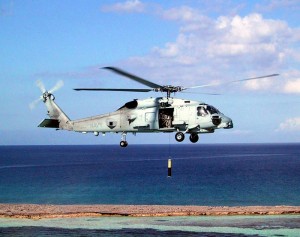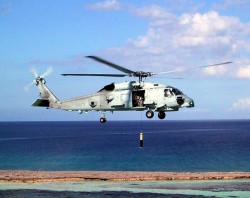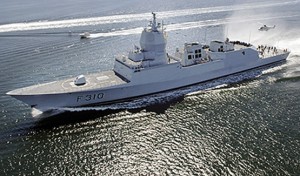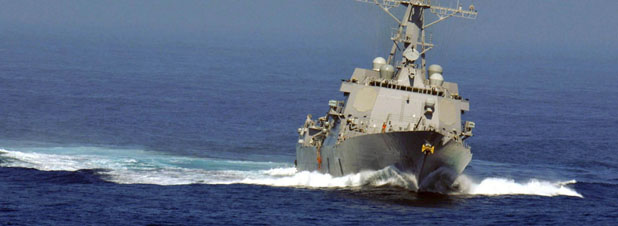Last month we challenged contributors to take their best shot (or really any shot, so long as it was interesting) at articulating alternatives to the U.S. Navy’s Arleigh Burke-class DDG Flight III. We originally intended the series to run a week, but never ones to reject late-but-coherent thoughts, we kept it going as long as the submissions kept coming in. The results were quite interesting, challenging force structure/projection assumptions, as well as following the assumptions in the chain of reasoning leading to the Flight III as currently conceived:
- The U.S. needs to conduct ballistic missile defense (BMD)
- U.S. BMD needs a sea-based component
- The sea-based component needs to fit on a surface ship
Most of the hard looks questioned whether the (yet-to-be awarded) Air and Missile Defense Radar is the best way forward for the BMD mission and if so, whether the Flight III DDG is the best platform on which to base it.
Here are some parting shots that focus not on the BMD side of the house, but on ways to generate more of what a Flight III would accomplish with the rest of its mission set toolbox:
LT Patrick Kiefer, USN:
“One thing that we need more of on the destroyers is more helicopters… why we stop at 2 is a little baffling and then only a carrier has more…why not look to put 4 or 6 with simultaneous takeoff and landing? And when you look at everything the MH-60 brings, it is really a force multiplier that brings significant capabilities to the anti-submarine warfare (ASW) and surface warfare (SUW) missions, especially counter-swarm, and provides some limited support to anti-air warfare (AAW) and STRIKE.”
Sebastian Bruns, Germany:
The selection of the Flight III DDG or an alternative needs to be explained to the American people. Thoroughly. It is a grave irresponsibility to not lead a public discourse about the value of sea power in general, and the value and uses of certain platforms over others in particular.

It follows from this that there must be a coherent policy – means selected to accomplish aims with due respect to timing and costs (“strategy”). This would serve as national security contract underpinning the use of the Navy (and Marine Corps and Coast Guard) for the better of the nation. What do you want from a (probably Aegis-equipped?) ship? FIghting pirates off Somalia or intercepting ICBMs in the Mediterranean? Counter-narco ops in Mexico or deterrence of regional rouge states? This approach is easier said than done, but one needs bold characters and ideas to really make a strategy deserving of its name (as opposed to yet another doctrine, white paper, document, etc. that’s more platitudes than substance). Vague “AirSea Battle” concepts don’t buy public support, and they rarely serve as a 10- or 20-year outlook. 30-year shipbuilding plans, on the other hand, don’t mean much to many people (in fact, as a Hill staffer, I attended a hearing where the value of a three-decade plan was questioned and IMHO misleading arguments were made for a 10- or 20-year shipbuilding plan).
U.S. shipbuilding must get its act together, along with a trimmed procurement bureaucracy at the Pentagon and a coherent Congress that sets its priorities straight. This last item might, above all, be the most “wishful” of all my thinking, as politics will always be politics. But consider for a moment the extensive list of design failures, cost-overruns, ideas scuttled at the drawing board, and procurement problems vs. the “successes” of the past 25 years. There’s quite a negative imbalance, from the perspective of an outside observer. Competitiveness must be improved. Perhaps the U.S. needs to finally look abroad for designs that could be adapted for the U.S. Navy. A joint design, perhaps, with a trusted allied partner nation from Asia or Europe?
I am under the impression that the current pace of events (and, quite frankly, developments not really in favour of a strong defense budget) might well quickly overtake the discussions that naval specialists lead among themselves, rendering these conversations irrelevant. The end state? Pooling and sharing, leading from behind by default and necessity, without the negative political connotations.
LT H.Vic Allen, USN:
The ability to base 2 helos is non-negotiable. Helos expand a great deal – from situational awareness (SA) to the weapons systems envelope to flexibility; you name it. The capabilities of the MH-60R brings a ridiculous amount of SA to the CO/warfare commander.
Rethink the bridge watch team, a la LCS. For the vast majority of the time, there’s no reason why fly-by-wire and autopilots can’t do the work of a bridge team that is probably 200% too big.
Keep VLS. Even a 32-cell install is very useful.
Hybrid power plants that support kinetic and directed energy weapons. GTGs won’t cut it anymore.
Incorporate a wide array of UAVs. Undersea unmanned vehicles (UUVs) and unmanned surface vehicles (USVs) don’t provide enough bang for the buck – a DDG is very visible, so stealthy insertion of UUVs isn’t going to help, and USVs just don’t have the range/speed necessary to make them competitive with UAVs. I foresee close-in (<10nm), local (10-100nm) and long-range (>100 nm) UAVs as assisting DDGs with their missions.
Note: The views expressed above are solely those of the authors and do not necessarily represent those of their governments, militaries, or the Center for International Maritime Security.







